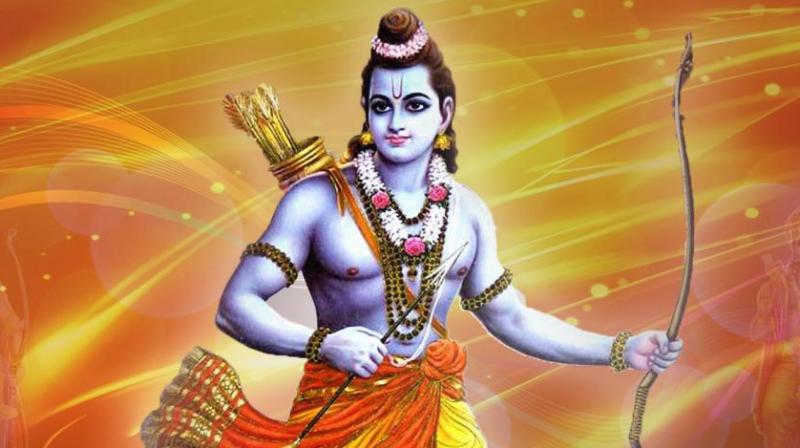Sidestep a fiercely communal campaign, find solace in Ayodhya’s Ram Mandir
Cross into Ayodhya and throngs of devotees chanting Jai Siya Ram choke the lanes.

Some friends are puzzled that I celebrated Ram’s birth on Ram Navami earlier this month in the most magnificent Ram temple in Ayodhya. In the imagination of my friends, the Ram Janmabhoomi-Babri Masjid is a collective rubble pending a Supreme Court verdict. So, in which temple did these splendid ceremonies take place?
In the late 19th century, moved by benign Hindu piety, the rulers of Orchha in Bundelkhand built the Kanak Bhawan Mandir on hallowed ground associated with Lord Ram. Following an over 200-year-old family tradition, Madhukar Shah, scion of the Orchha royalty, and his “rani” personally supervise the affairs of Ayodhya’s largest mandir. This Ram Navami was no different.
I have seldom seen Lord Ram’s city so bereft of political presence. The old colonial bungalow refurbished as Faizabad’s Circuit House looks like a spruced-up haunted haven. Cooks, bearers, housekeepers, in white, appear at one end and shuffle past with no apparent work in hand. It is almost spooky.
Cross into Ayodhya and throngs of devotees chanting Jai Siya Ram choke the lanes. Milling crowds climb the wide staircase of the Kanak Bhawan Ram temple. Chanting devotees come in waves, their hands uplifted in reverence, eyes focused on the jharokha or balcony beyond which the aarti begins at 11 am in preparation for the Lord’s birth at noon. But even at noon, there is no frenzy, just chants of reverence accompanied by a surge towards the balcony for a closer experience of the moment of birth.
I do not know how purists will take this report but my wife and I are rather proud that we had more than a ringside seat, virtually within whispering distance of the birthing suite where Ram was born. The pujari with a “thal”, or plate of lamps, makes circles around the imaginary bed. The lights flicker on the gold silk and taffeta, neatly folded in Ram’s and Sita’s wardrobes lining the walls all around us. Once Ram Lalla is born, Madhukar and his rani wave a “murchal” a sort of whisk in slow, pampering motions around the infant. It is as close to Christ’s Nativity scene as I have experienced. Remarkably, it all happens in the imagination. It is hard to visualise larger crowds, steeped in such unadulterated reverence.
Pardon the thought, but is there a need for a parallel temple of contention which will only neutralise the good natured atmospherics in this magnificent mandir?
Our visit was a function of both: my passionate pursuit of the multicultural and Madhukar’s profound hospitality. The red and yellow thread the priest tied on my wrist was, in its minutest detail, similar to what my mother did to visitors of diverse faiths who visited our village home during Muharram. In fact, even the Imambara, where a replica of Imam Hussain’s tomb in Karbala is kept, was not very dissimilar to the sanctum sanctorum — all peculiarly Indian.
Mosques, of course, are different. There is a great deal in common between the Jama Masjid, the Blue Mosque or the Shah Abbas mosque in Delhi, Istanbul and Isfahan respectively. But these mosques, in their distinct grandeur, are marvels of architecture. The Babri Masjid was by no stretch of the imagination a great work of architecture. In August 1989, when I visited Ayodhya and saw the Babri Masjid, the nearby shilanyas or temple bricklaying ceremony was a distressing scene, custom made for conflict. I have since found myself on the same wavelength as the moderate cleric, Maulana Kalbe Sadiq. Since his cancer has galloped to its last stages, what the maulana says is virtually his last will and testament: “A Muslim can spread his prayer mat anywhere, facing the Ka’aba, and say his prayers; a Hindu consecrates the idol forever.”
According to him, if Muslims win the Ayodhya case in the Supreme Court, they should make a gift of the land for construction of the temple, “The gesture will electrify the Hindu masses; communal politics will be defeated.”
The soft, reverential tones of the ceremonies at the Ram temple are such a welcome relief from the warlike atmosphere of intrigue and deception that we witnessed during the shilanyas 30 years ago.
I can never forget the harassed face of the district magistrate of Faizabad, Ram Sharan Srivastava, under instructions to implement the underhand, duplicitous order handed over to him by the Congress high command — Rajiv Gandhi, Arun Nehru and Narayan Datt Tiwari.
The situation was this: the Allahabad high court had stayed any bricklaying on “disputed” land. But Ashok Singhal of the Vishwa Hindu Parishad threatened “rivers of blood” if the shilanyas were not held where the VHP wanted it. The district magistrate was instructed to accede to Singhal’s demand “confidentially”. In other words, bricklaying would be allowed clandestinely on disputed land.
Singhal had agreed to keep this secret. But the Congress had to score brownie points: it announced that the bricklaying ceremony was allowed only on land which was “not disputed”. No sooner was the handout issued than Singhal, not to be upstaged, also held a press conference. “We have laid the foundation stone at exactly the place within our construction plan.” The Congress doublecrossed the people; Singhal doublecrossed the Congress — and all this in the name of Maryada Purushottam, the Perfect Man.
I removed this nightmare from my mind and left the sanctum sanctorum remembering Allama Iqbal’s couplet:
“Hai Ram ke wajood pe Hindostaan ko naz/ Ehle nazar samajhte hain usko Imam e Hind.” (Ram is Hindustan’s pride. Men of vision consider him the Imam of Hindustan.)
Also, that pujari who walked past our house in Lucknow every morning, a wide smile on his face like he were blessing the world: Kahu kahu maa? magan/ Kahu kahu maa? magan/ Hum apne Ram Ram jape maa? magan/ Jaa se laagi hai lagan. (People have their own founts of bliss. Mine is chanting Rama, who occupies the space in my heart.)

